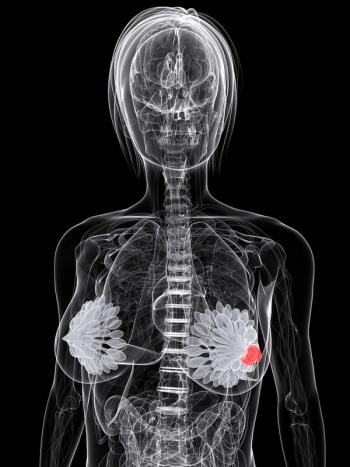
Oncology NEWS International
- Oncology NEWS International Vol 8 No 11
- Volume 8
- Issue 11
Postradiation Problems Cause Long-Term Pain
VIENNA, Austria-Most long-term breast cancer survivors who have had adjuvant radiotherapy are likely to have significant pain or functional impairment even 10 to 16 years after treatment, but fewer than one third receive pain medication, Ulf E. Kongsgaard, MD, of the Norwegian Radium Hospital, Oslo, said at the 9th World Congress on Pain.
VIENNA, AustriaMost long-term breast cancer survivors who have had adjuvant radiotherapy are likely to have significant pain or functional impairment even 10 to 16 years after treatment, but fewer than one third receive pain medication, Ulf E. Kongsgaard, MD, of the Norwegian Radium Hospital, Oslo, said at the 9th World Congress on Pain.
From a series of 2,113 women who had been treated with adjuvant radiotherapy to the breast wall and/or regional lymph nodes, the researchers evaluated 354 of the 450 patients who survived until 1996. Median observation was 10 years for women who had been treated with 2.5 Gy × 20 and 16 years for women who had been treated with 4.3 Gy × 10.
Arm edema, fractures of the ribs, and impaired shoulder function were the three most objective factors predicting late radiation side effects, Dr. Kongs-gaard reported. Pain interference in the patients life, evaluated by the Brief Pain Inventory (BPI), was characteristic in most patients.
Patients who had received the 4.3 Gy dose had more severe late effects than those treated with the 2.5 Gy dose. Median BPI pain scores were 19 of a possible 40 after 4.3 Gy and 15 of a possible 40 after 2.5 Gy. Median BPI reduced function scores were 34 of a possible 70 and 26 of a possible 70, respectively.
Despite a high sum on the BPI pain score, only 136 patients (37%) were on pain medication, Dr. Kongsgaard said. These included 61 patients (15%) on acetaminophen, 67 (14%) on acetamino-phen plus codeine, and 25 (6%) on aspirin or NSAIDs. Four patients were taking antidepressants, and none were on anti-convulsants. Only 9 patients (2%) were taking strong opioids.
The investigators concluded, Late sequelae after breast irradiation are associated with physical and psychological distress compromising quality of life. These problems are possibly underestimated.
Articles in this issue
about 26 years ago
Anti-VEGF MoAb Promising in Phase II Renal Cancer Studyabout 26 years ago
Government Lawsuit Seeks Billions From Tobacco Industryabout 26 years ago
NCI Plans a Large Phase III Trial of Lymphoma Vaccineabout 26 years ago
NCCN Database Expanding to Include Cancer Pain Outcomesabout 26 years ago
Fewer Blacks Than Whites Receive Surgery for Early Stage Lung Cancerabout 26 years ago
NSABP Trial Examines Surgery’s Role in Breast Cancerabout 26 years ago
Congressional Spouses Honor Three for Cancer Preventionabout 26 years ago
Prophylactic Tamoxifen Debated at ECCOabout 26 years ago
Survival Advantage for Simultaneous Goserelin and RTabout 26 years ago
NCCR Honors Seven Members of Congress as ‘Champions’Newsletter
Stay up to date on recent advances in the multidisciplinary approach to cancer.
















































































